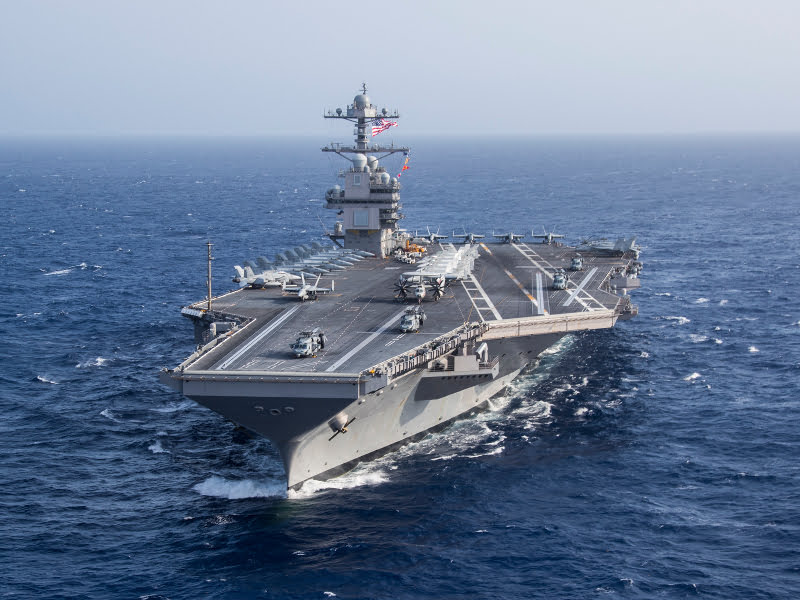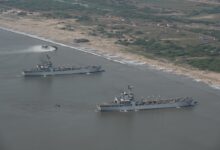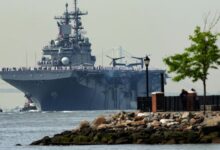USS Gerald R. Ford: Why US Navy’s Largest Warship Is So Expensive?

Why Is a Carrier in the Ford Class So Expensive? – In exchange for its cutting-edge technology, the USS Gerald R. Ford aircraft carrier comes with a hefty price tag.
At $13.3 billion, it’s almost 30% more than the Navy estimated it would cost and twice as much as the last flat-top built. The modernisation of conventional carrier tools such as arresting gear, elevators, and launch systems adds excitement to America’s largest and most expensive carrier. Because of cheaper maintenance costs and the requirement for a smaller staff, the Ford is expected to save billions over the next 50 years.
What it has borne, though, is extravagant spending on petty matters – a clogged toilet, for example, cost the Navy $400,000.
The US government is taken aback by ballooning costs.
Four Ford-class carriers are under construction at various stages, and this supercarrier will eventually replace the entire aircraft carrier fleet. However, it is this construction that has caused the carrier’s cost and construction time to skyrocket. According to a report by the US Government Accountability Office, the total cost estimate for the Ford-class is $120 billion, up from the previous estimate of $77.3 billion.
The Empire State Building has more man hours than the Ford-Class.
“The Ford was built by more than 5,000 shipbuilders over the course of 49 million hours.” According to a video posted by Business Insider last September, “that’s seven times the hours clocked when building the Empire State Building.”
It’s preferable to focus on just one or two new technologies at a time.
The new technologies for the arresting gear, elevators, and launch mechanisms have all gone over budget, and naval leadership and think tank analysts believe it was a mistake to work on more than two new technologies at once on such a large ship.
The new carrier was delayed for five years as a result of this. The electromagnetic catapult system, for example, cost one billion dollars to study and test, while the installation cost $670 million.
Some critics argue that the Navy should have tested the technologies first before attempting to push modernizations on the Ford as it was being built.
Prioritize mature technology.
According to Mandy Smithberger of the Project On Government Oversight, or POGO, some of the Navy’s failures on significant ship-building projects have hurt the branch. A key roadblock has been the Navy’s tendency of “creating highly sophisticated technology that’s expensive to maintain and unreliable.” “It’s not necessarily new technology, but it’s immature,” Smithberger continued, “so it has to be proven technology.”
Not Everything About the Ford-Class Is Terrible
The comments about the Ford-class can be harsh at times. The flight deck operations run like a well-oiled machine when everything goes according to plan. According to the Navy, the upgraded arresting and launch systems will allow the carrier to execute aircraft missions up to 30% faster. Because of the ship’s smaller island, more aircraft can fit on deck. The upgraded arresting gear is more efficient and computer-assisted, ensuring the aviators’ safety.
However, the acquisition programme has proved a stumbling block. One expects that the lessons acquired from the Ford can be applied to other carriers in the class, such as the Kennedy and Enterprise, to reduce costs and improve schedules.
On the Ford-Class, the worst is behind it.
Although the Ford-class is a cautionary tale, it has made it through the most challenging portions of its purchase process. This year, the ship will be ready for war, and the Navy will have to patrol some difficult areas. As a result, the Navy will have a significant advantage in leading carrier combat groups in high-risk areas around the world.







Facebook Comments